Wine and Champagne are great beverages that we enjoy at most formal events. Their sparkling and bubbly appearance makes them the star of the show during a toast. And while many confuse the two, each has unique characteristics that make them different from the other.
Today, we will decipher the statement why Champagne is considered a sparkling wine, but not all sparkling wines are Champagne. So pop open a bottle, and let’s get to know our beloved drinks!
Wine vs. Champagne
The easiest way to distinguish one from the other is its place of origin and main ingredient. Wine is made anywhere in the world. Its main ingredient is grapes, but any fruit will do as long as it has a high sugar content good enough for fermentation.
On the other hand, you can only call it a true Champagne if it is from the region of Champagne in France. Or at least 100 miles away from the geographic origin. And Champagne uses a specific variety of grapes during production to maintain quality.
To further know the difference between wine and Champagne, take a look at this table:
| Category | Wine | Champagne |
| Location | Produced worldwide | Produced from the Champagne region in France |
| Main Ingredient | Typically grapes; other fruits include plum, pomegranate, and apple | Typically a mixture of pinot noir, pinot meunier, and chardonnay |
| Production Method | Most wines undergo single fermentation, then aged in barriques | Méthode Champenoise (a.k.a Traditional Method) involves a secondary fermentation |
| Types | Red wine, White wine, Rosé wine, and Sparkling wine | Brut Nature, Extra Brut, Brut, Extra Dry, Dry, Demi-Sec, and Doux |
| Serving Temperature | Red: 55 to 70 degrees Fahrenheit
White: 40 to 55 degrees Fahrenheit |
38 – 45 degrees Fahrenheit |
| Pricing | $13 to $7,000 | $12 to $9,000 |
What is Wine?
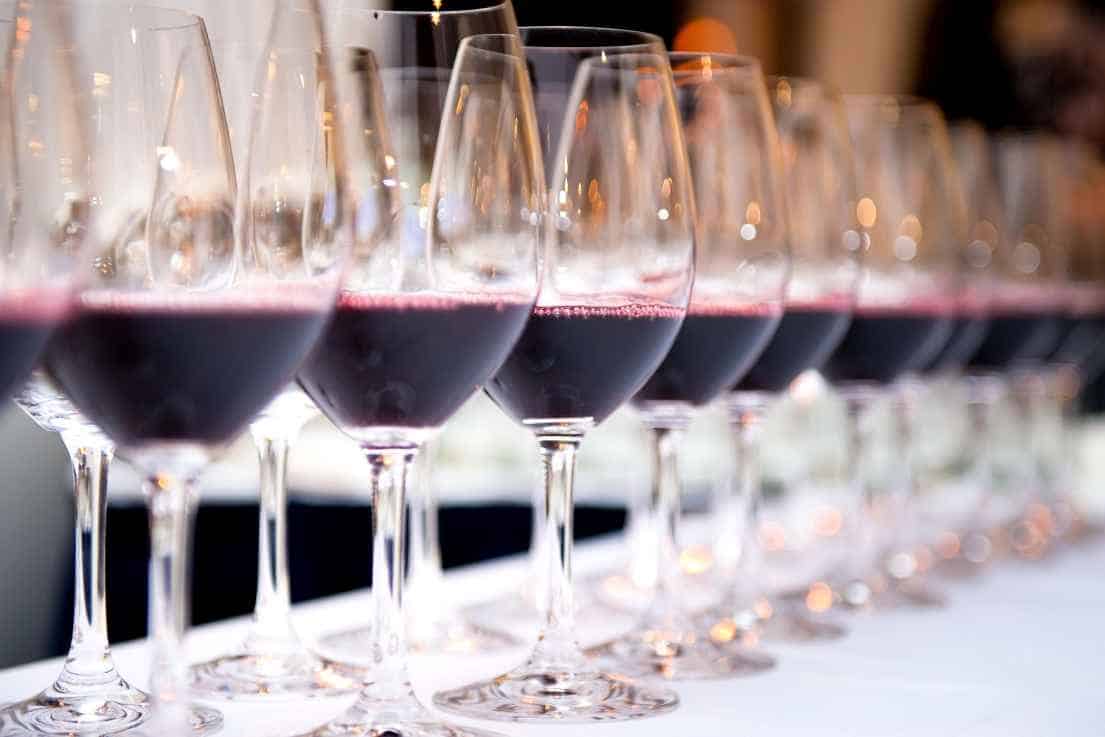
Wine is an alcoholic drink produced from fermented juices of grapes. But other fruit juices like plum and pomegranate are also used in winemaking. The name only varies depending on the main ingredient used. Strawberry wines and apple fruit wines are some of the most popular ones.
Types of Wine
There are many types of wine and sub-categories. But we’ll make it easier for you to understand so you can make the most of your drinks. Let’s start with its two main types:
| Red wine (per 147g) | White wine (per 147g) | |
| Grapes | Darker red or black grapes, the skin remains | White grapes, skin is removed |
| Taste | Sweet and dark taste | Citrusy and crisp taste |
| Calories | 125 cal | 115 cal |
| Carbohydrates | 4 grams | 5 grams per serving |
| Alcohol Content | 3.1 grams | 2.9 grams |
| Types | Cabernet Sauvignon, Merlot, Malbec | Chardonnay, Moscato, Riesling |
| Serving Temperature | 55 to 70 degrees Fahrenheit | 40 to 55 degrees Fahrenheit |
Red and white wines are the most famous among the types, but there are two other types of wine to enjoy as well:
- Rosé Wine: this is a bit similar to red wine but is lighter in color. Unlike the former that soaks the skin of grapes, in a Rosé, grapes undergo maceration. Once they achieve the pale pink color, they drain the juice from the skin and place it in a vessel to ferment.
- Sparkling Wine: from the name itself, it is a bubbly drink with a good amount of carbonation. The main ingredient of this drink can either be white or red grape. Unlike a typical wine, it undergoes a second fermentation to produce carbon dioxide. And one of the most famous regional sparkling wines is Champagne.
What is Champagne?
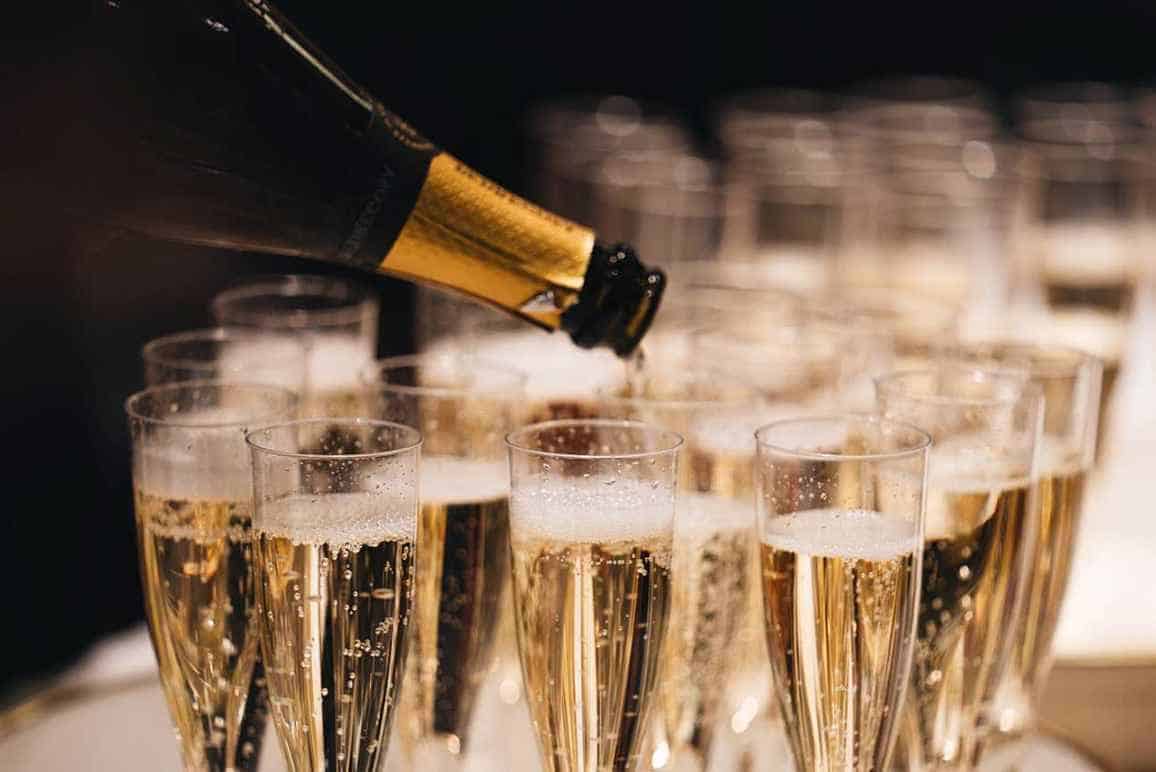
Champagne is a type of regional sparkling wine that originated in France. It has a bubbly but elegant-looking appearance, making it the go-to beverage during formal events. It has a rich citrus, cream, yellow apple, toast, and almond flavor. And while it may look light and carbonated, its ABV of 11.5% can make you drunk faster.
Types of Champagne By Dosage
If you want to get to know your wine better, the first thing you need to do is to read the labels. Yes! We know how exciting it is to pop open a new bottle. It is like how most people skip reading the instructions before operating a new gadget. But knowing how to read the labels makes you understand what wine fits you.
Do you prefer something sweet? Do you want it to be a little dry? Or do you like less sugar? Check out the types below to know what label you should be eyeing.
- Brut Nature (Brut Zero): 0 to 3 grams/liter
- Extra Brut: 0 to 6g grams/liter
- Brut: less than 12g grams/liter
- Extra Dry: 12 to 17 grams/liter
- Dry: 17 to 32 grams/liter
- Demi-Sec: 33 to 50 grams/liter
- Doux: more than 50 grams/liter
Brut nature contains almost no sugar and has an acidic and bitter taste. Doux is the sweetest of all Champagnes; it is almost like a dessert drink!
And with that, have you decided on what bottle to get? If you answered no, take this tip while exploring the sweetness levels. Try out the extra dry first. That way, you have a baseline that you can work around. If you find extra dry less sweet, try dry. Then do the opposite if you want it bitter.
If you want to know more about how to choose Champagne, then watch this video: https://www.youtube.com/watch?v=-RSB6ve6B0c
Origin of Wine and Champagne
Not everyone is a history buff, but knowing a little background about your drink makes it remarkable. It’s like sipping on a wine glass while it tells you fascinating stories to remember.
Wine Origin
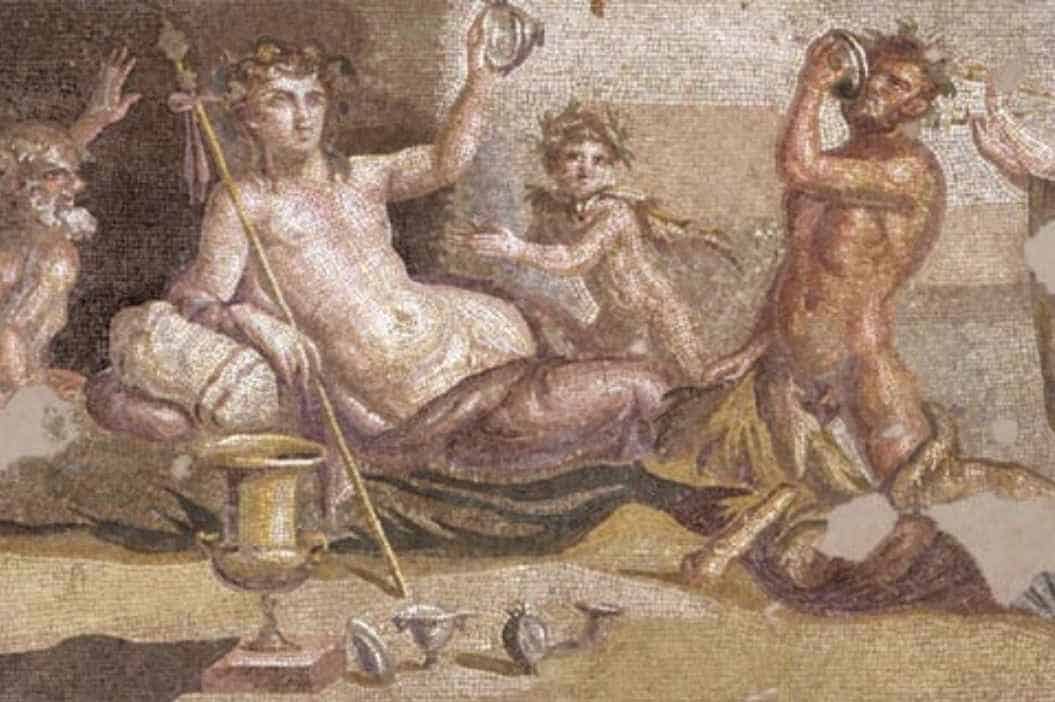
According to archaeologists, Georgia (the cradle of wine) is where the first known wine creation occurred. In 2015, they uncovered 6000 BCE ancient vessels containing grapes and grape seeds. It dates so long that winemaking practices in Georgia developed earlier than writing and the Iron Age.
Winemaking in Georgia was not exactly a formulated discovery but rather a eureka moment. The fermentation took place by accident when a native yeast stuck to grapes stored in vessels. The sugar content was high enough to ferment and convert into alcohol. And the rest was history for both grape growing and winemaking.
Today, there are nearly 65,000 wine producers across the globe, mainly from Italy, France, Spain, and the United States. Meanwhile, Georgia continues to make its name in the wine market even with a small amount of total wine production. For them, winemaking symbolizes endurance, rebirth, and prosperity.
Champagne Origin
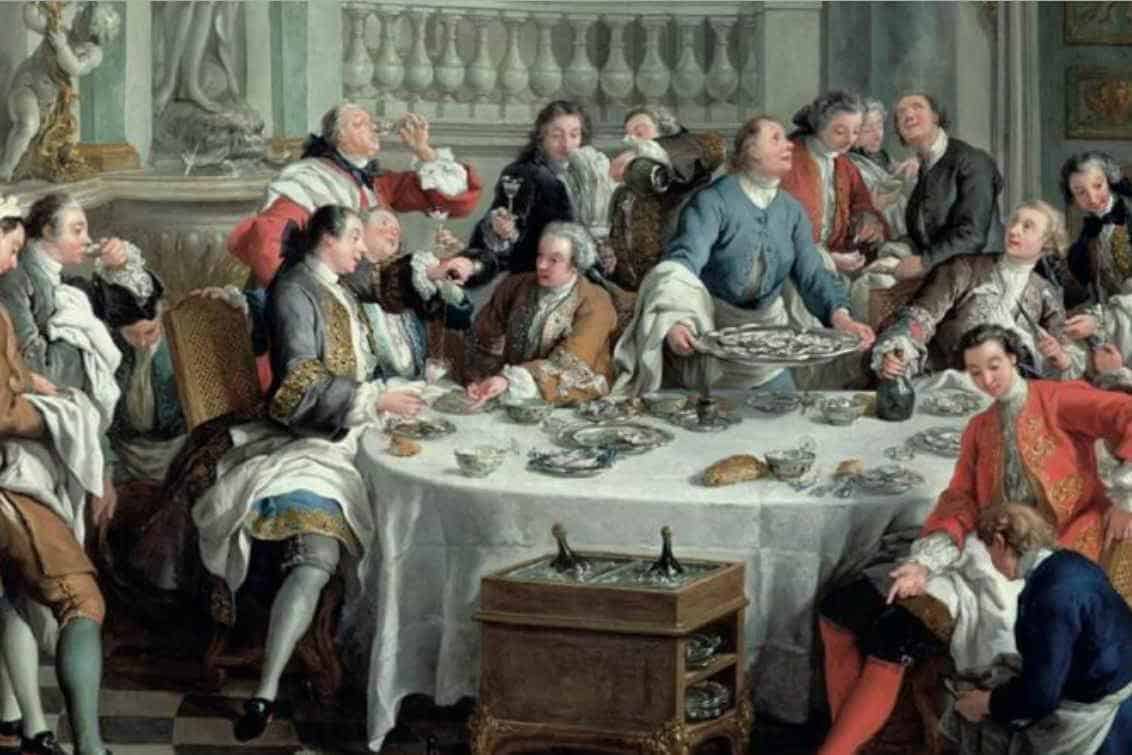
It was in the 17th century when Champagne was invented and popularized in Champagne, France. Champagne wines were abundant during the coronation banquets and quickly gained a reputation for their taste and quality. But did you know that Champagne wines were originally still wines before they obtained their bubbly appearance?
Christopher Merrett, an English physician, was the first to discover the method of adding fizz to wine. But it was Dom Pérignon, a monk, who perfected and adopted the technique to create sparkling wine in Champagne, France.
Champagne quickly spread across the world. To protect its title, France created a treaty that would limit the use of the term to those products from the Champagne region.
However, the U.S. never ratified the treaty. So today, the U.S. government allows the use of the name as long as it indicates the geographic origin. So, read the labels if you want to taste an original Champagne.
Wine or Champagne: Which is Better?
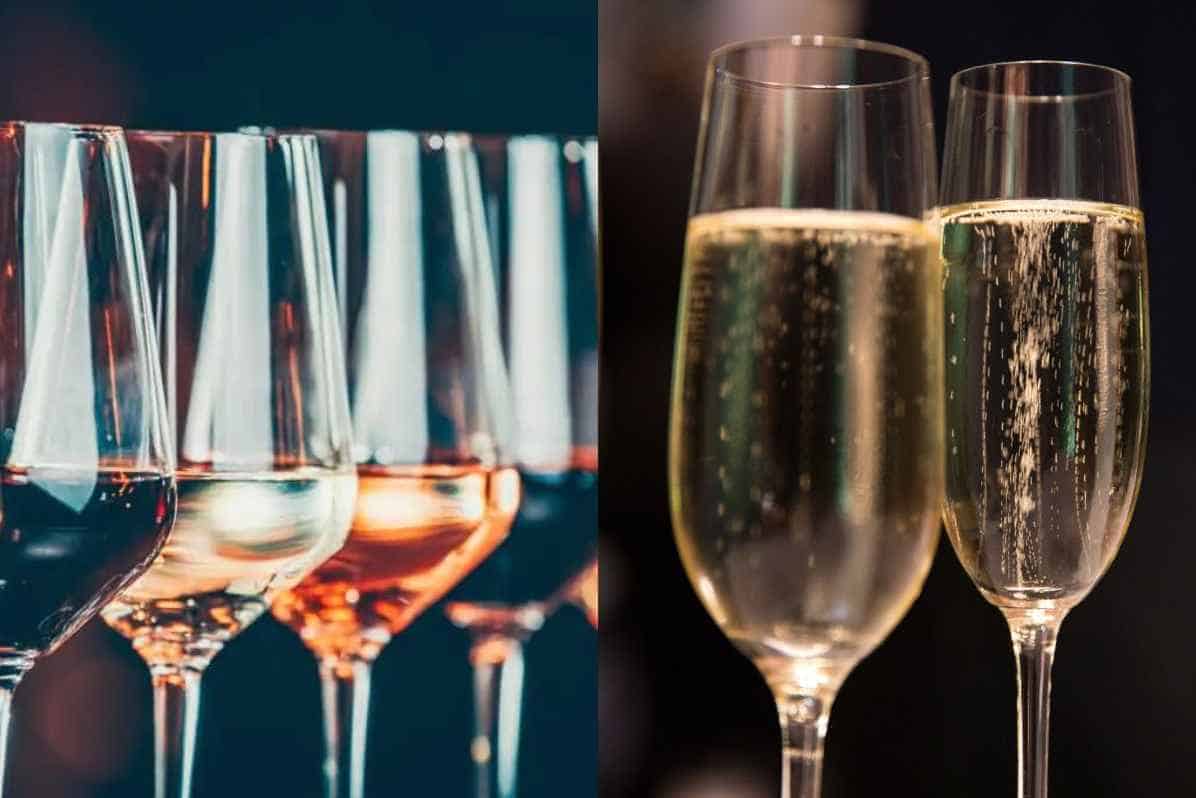
With the varying types and styles in the market, it would be hard to decide which is better. Each has its unique characteristics that are captivating and enjoyable. One can be refreshing, and the other can give you a nostalgic feel during a Christmas night. But let’s try to see the other components of these drinks.
In general, Champagne has a lower calorie count compared to red and white wines. A standard glass of Champagne contains approximately 80 calories, while red and white wines are around 115 to 125 calories. This is because Champagne has a lower alcohol content. So if you’re keen on keeping your diet, Champagne is the way to go.
While most consider the calories between the two, red wine also has something to offer that would benefit your health. That is flavonoids. Flavonoids are natural compounds that have medicinal benefits. It has anticancer, antioxidant, antiviral, and anti-inflammatory properties. While Champagne contains flavonoids, it can only offer low amounts.
When it comes to its health benefits, how much you drink matters more than what you’re drinking. Alcohol is still alcohol. It will still give you the bubbly booze. Drinking in moderation is still the key to a healthy body.
Summary
The difference between wine and Champagne majority lies in their geographical origin and the main ingredient used. Wine is a more general type of beverage that is produced around the world using different fermentable fruits. Champagne, on the other hand, is a type of sparkling wine that is only produced in the region of Champagne in France.
Whether you enjoy the sweet dark flavor of wine or the crisp citrusy taste of Champagne, these two beverages can confidently satisfy your palate.

George Moore, co-founder of Wine Flavor Guru, is a charismatic entrepreneur with a rich background in California’s wine industry. Alongside Sylvia, he transformed a Sonoma County vineyard into a source of premium wines. George’s expertise in sourcing exceptional grapes and his approachable style make wine appreciation both accessible and engaging.
